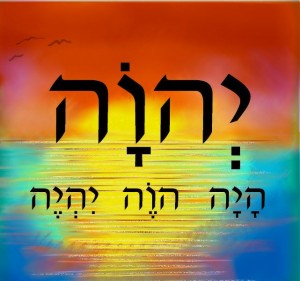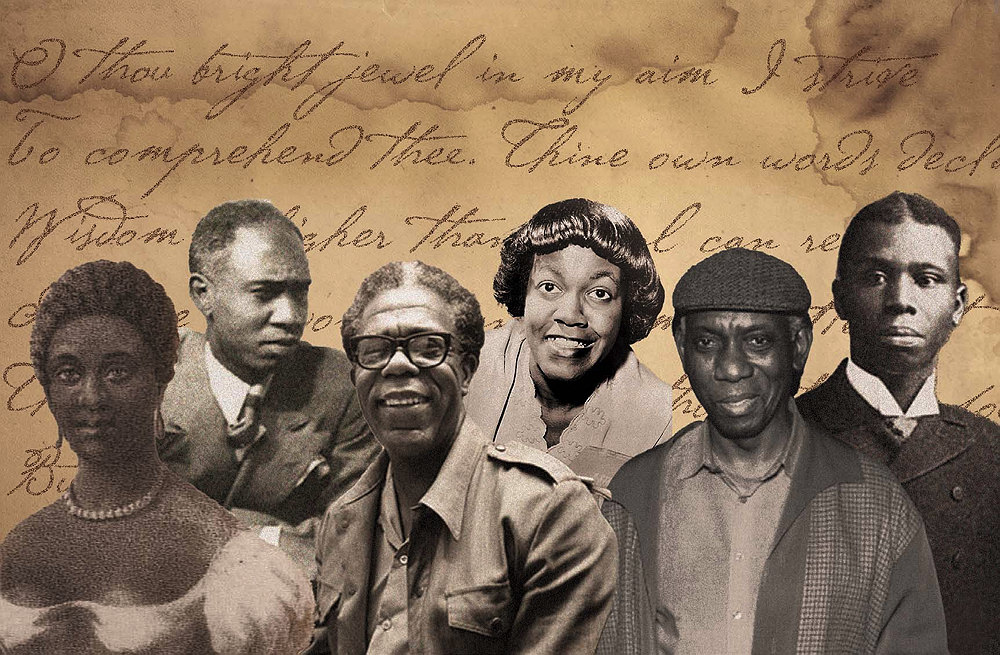(ThyBlackMan.com) When we speak of the Feasts of the Lord, we are talking about the word “moadim”, which means “appointed times”. Yehovah, who is now Yeshua, commanded that seven appointed times be observed and kept by His people, Israel. The seven appointed times in order are – Passover, Unleavened Bread, First Fruits, Moadim of Weeks, Day of Trumpets, Day of Atonement, and Moadim of Tabernacles. The Appointed times of the Spring season are Passover, Unleavened Bread, First Fruits, and Pentecost or Feast of Weeks. The Appointed Times of the Autumn are Day of Trumpets, Day of Atonement, and the Week of Tabernacles.
The first month of the new year is determined at the end of the 12th month. If the renewed Moon is sighted at sundown, and the barley crop near Jerusalem is ripe enough (which is called “AVIV”), the First Month of the new year is officially begun. If the barley crop is not yet ripe enough, or not yet “aviv”, a 13th month is assigned in order to give the barley another 29 days to get ripe. Israel was told to observe (guard or protect) the month Aviv. In the KJV bible, it is spelled Abib, in error.
According to the gentile 2016 calendar, the pagan d ay of “Good Friday”, in honor of Dagon the fish god, and “Easter”, in honor of Semiramis, the Babylonian sex goddess, that supposedly turn a bird into an egg laying rabbit, is celebrated on March 25th and March 27th. The truth is, Yeshua died on the cross about 3:00 PM Wednesday, April 28, 28 AD, and rose from the dead about 5:15 PM, Saturday May 1, 28 AD. The Lord of the Sabbath, rose on the Sabbath. But when the renewed Moon was sighted in Israel on March 11th, the barley was not yet aviv, so a second twelfth month (Adar Bet) is observed in 2016 AD.
ay of “Good Friday”, in honor of Dagon the fish god, and “Easter”, in honor of Semiramis, the Babylonian sex goddess, that supposedly turn a bird into an egg laying rabbit, is celebrated on March 25th and March 27th. The truth is, Yeshua died on the cross about 3:00 PM Wednesday, April 28, 28 AD, and rose from the dead about 5:15 PM, Saturday May 1, 28 AD. The Lord of the Sabbath, rose on the Sabbath. But when the renewed Moon was sighted in Israel on March 11th, the barley was not yet aviv, so a second twelfth month (Adar Bet) is observed in 2016 AD.
The crop of barley must be used in the Temple as the First Fruits offering, which we will explain later. If the barley is not ripe enough, there cannot be a first fruits offering to Yehovah.
So that is why another month is added, called Adar Bet, to give more time for the barley crop to ripen. Adar is the twelfth month, and Adar Bet is “the second twelfth month”.
Once the first day (or evening) of the new year is determined by the sighting of the renewed Moon, nine days later, on the 10th day of the month, the High Priest of the temple would travel from Jerusalem to Bethlehem, a five mile journey, to pick out the most perfect male lamb in the city of David. There would be thousands of lambs killed that would be sacrificed on the Temple Mount, but the primer lamb had to be specially chosen.
The priest would take it back to Jerusalem by late morning, enter thru a special gate, and take the special lamb thru the streets and up to the Temple mount. The streets would belined on both sides by thousands of people, who would yell “Hosanna in the highest, to the son of David. Messiah come, Messiah come. Blessed is he that cometh in the name of Yehovah”. This was a yearly rehearsal which King David put in place in expectation of the promised coming of the Messiah of Israel. This all occurred on the morning of the 10th day of the first month.
This day, and for the next three days, the lamb would be tied to a post and available for examination or inspection by the people to look for flaws. If no blemish could be found by the 14th day, the priest would proclaim “I find no fault in him”. With help, the High priest along with other priests of the temple, would kill thousands of lambs on the temple mount. After more than six hours of sacrificing lambs, the last premier lamb would be sacrificed, and the High Priest would shout with a loud voice “It is finished”. All the lambs would be roasted and eaten after sundown.
The 14th day is called “Passover”, because in Egypt, in March of 1598 BC, the Lord “passed over” the houses that had the blood of the lamb on their door posts.
And the blood shall be to you for a token upon the houses where ye are: and when I see the blood, I will pass over you, and the plague shall not be upon you to destroy you, when I smite the land of Egypt.
Sin is the plague that causes death. The wages of sin is death (Romans 6:23). The blood of Yeshua, the Lamb of Yehovah, is the cleansing agent that washes away sin when immersed in water and His name is called upon.
On Saturday morning, April 24th, 28 AD, Yeshua, as the Lamb of God, rode into Jerusalem a half hour before the High Priest could return from Bethlehem. The people were lined up on the sides of the pathway leading to the Temple Mount, expecting to see the High Priest bringing the premier lamb to the Temple Mount. But as instructed, the disciples of Jesus started yelling “Hosanna in the Highest” as Jesus entered thru the gate. The hundreds of thousands of people along the pathway heard the cheering and thought it was the signal to start shouting for the High Priest, but it was Yeshua riding by on a donkey and the people felt that the Messiah had finally come, and shouted even louder.
The temple priests wanted Jesus to tell His disciples to “shut up” and wait for the High Priest to make his entry. This is when Jesus replied “I tell you this, if these people should hold their peace, the stones would immediately cry out”!!
On this day, and for the next three days, Jesus was examined (questioned) on the Temple Mount. During this time, the “woman caught in adultery” was thrown before Jesus, to “test” His judgment. Yeshua also “cleansed” the Temple a second time (as He did one year earlier), He gave the parables of the two sons, the vineyard, and the marriage feast. Other “inspections” were asked of Him. The Pharisees asked about giving tribute to Caesar. The Sadducees asked about a seven time widow. The Scribes asked Him about the greatest commandment.
Then Yeshua asked them all “How is it that David called the Messiah ‘Yehovah’, when the Messiah was also David’s Son” (Psalms 110)?
The religious leaders couldn’t answer. Embarrassed by Yeshua in front of the people at the Temple Mount, the religious leaders became angry, dared not ask Him any more questions, and made plans to have Him killed as soon as possible.
Jewish Rabbis are also guilty of changing the scriptures, as did the Catholics. For a certain reason, the rabbis took out the name Yehovah, and replaced it with the word “Lord” over 6,000 places in the scriptures. This was because Rome had forbidden the name of Yehovah to be written, or spoken. This was in the year 167 AD. Anyone caught saying the name, or writing it down, would be killed. So in order to save lives, the rabbis made copies of the scriptures without the name “Yehovah”, except in two places.
The correct reading of Psalms 110:1, before they changed it is:
Yehovah said unto Yehovah, Sit thou at my right hand, until I make thine enemies thy footstool.
The rabbis thought it was confusing, and had it changed about 110 years later. It could have said “The Lord said unto the Lord”, but was changed to “the Lord said unto my Lord”. But that is not what King David wrote.
After sundown, which started the 14th day, on Tuesday evening the 27th of April, Judas betrayed Jesus with a kiss, and the Sanhedrin held a kangaroo court all night in order to have Jesus killed before the next sundown. Take note that before sending Yeshua to the cross, Pilate proclaimed “I find no fault in Him”. This is what the High Priest would say before killing the special lamb.
For six hours, while the lambs were being killed on the Temple Mount, Yeshua was hanging on the cross. On this day, the afternoon of April 28th, He fulfills scripture by quoting Psalms 22, and verbally forgives the sins of the repentant thief, who was the last person to obtain remission of sins without water baptism. Being the High Priest of the Kingdom of Heaven, Jesus is offered hyssop and declares “It is finished”! Once Jesus died, only then was the sacrifice complete.
There was then an earthquake, and the hill of rock where the crucifixion took place was split, twenty-four graves at the Mt. of Olives cemetery were disrupted and exposed (“marked”). A Roman soldier pierced Yeshua’s side, up through His heart, to be certain that Yeshua was dead. Yeshua’s blood (and some water) came gushing down His side and legs, down the cross, and poured into the crack of the rock. It continued to stream down twenty-three more feet and dripped upon the West end of the Arc of the Covenant, which had been hidden in a chamber in Mt. Moriah, by Jeremiah, about 614 years earlier when Jerusalem was under siege by Babylon.
This was Wednesday, April 28th, the 14th day of the first month Nisan. Yeshua was dead, as the sunset was approaching, and He was taken down by a man named Joseph (of Aramathea), put in a new tomb, and he rolled a big stone to cover the entrance. Then Joseph left the area. This is all what “the women” saw before they also left the area, thinking that Yeshua had not yet received a proper burial with spices. What they didn’t see was that Joseph later returned with Nicodemus, and properly prepared Yeshua’s body.
Since the women did not see this, they would come again early Sunday morning to try to complete the burial.
This completes the appointed time of Passover.
Staff Writer; Herman Cummings
You may also purchase this writer book which is entitled; Moses Didn’t Write About Creation.




















Leave a Reply